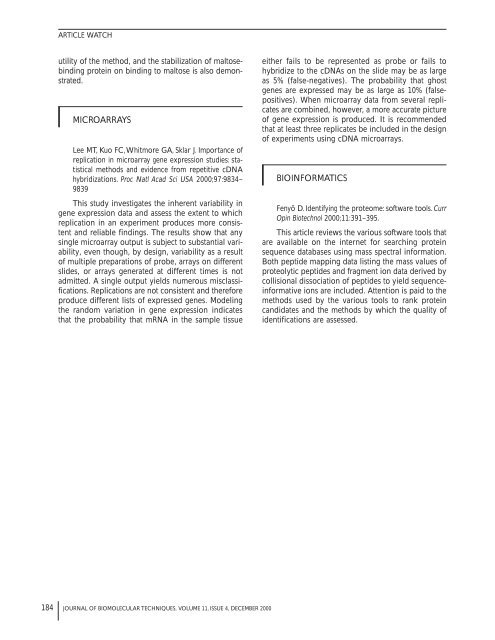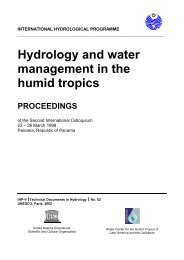FR AB - Science Reference
FR AB - Science Reference
FR AB - Science Reference
Create successful ePaper yourself
Turn your PDF publications into a flip-book with our unique Google optimized e-Paper software.
ARTICLE WATCH<br />
utility of the method, and the stabilization of maltosebinding<br />
protein on binding to maltose is also demonstrated.<br />
MICROARRAYS<br />
Lee MT, Kuo FC,Whitmore GA, Sklar J. Importance of<br />
replication in microarray gene expression studies: statistical<br />
methods and evidence from repetitive cDNA<br />
hybridizations. Proc Natl Acad Sci USA 2000;97:9834–<br />
9839<br />
This study investigates the inherent variability in<br />
gene expression data and assess the extent to which<br />
replication in an experiment produces more consistent<br />
and reliable findings. The results show that any<br />
single microarray output is subject to substantial variability,<br />
even though, by design, variability as a result<br />
of multiple preparations of probe, arrays on different<br />
slides, or arrays generated at different times is not<br />
admitted. A single output yields numerous misclassifications.<br />
Replications are not consistent and therefore<br />
produce different lists of expressed genes. Modeling<br />
the random variation in gene expression indicates<br />
that the probability that mRNA in the sample tissue<br />
184 JOURNAL OF BIOMOLECULAR TECHNIQUES, VOLUME 11, ISSUE 4, DECEMBER 2000<br />
either fails to be represented as probe or fails to<br />
hybridize to the cDNAs on the slide may be as large<br />
as 5% (false-negatives). The probability that ghost<br />
genes are expressed may be as large as 10% (falsepositives).<br />
When microarray data from several replicates<br />
are combined, however, a more accurate picture<br />
of gene expression is produced. It is recommended<br />
that at least three replicates be included in the design<br />
of experiments using cDNA microarrays.<br />
BIOINFORMATICS<br />
Fenyö D. Identifying the proteome: software tools. Curr<br />
Opin Biotechnol 2000;11:391–395.<br />
This article reviews the various software tools that<br />
are available on the internet for searching protein<br />
sequence databases using mass spectral information.<br />
Both peptide mapping data listing the mass values of<br />
proteolytic peptides and fragment ion data derived by<br />
collisional dissociation of peptides to yield sequenceinformative<br />
ions are included. Attention is paid to the<br />
methods used by the various tools to rank protein<br />
candidates and the methods by which the quality of<br />
identifications are assessed.















